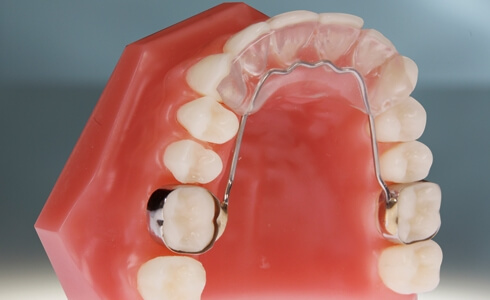Orthodontic Expander
A palatal expander is used to widen the upper jaw so that the upper and lower teeth will fit together.
Although it may vary from person to person, most usually feel slight pressure on their teeth. As the patient or parent turns the expansion screw using a key, a space develops between the front two teeth. Some may notice a larger space while others do not notice a space at all. The space will close naturally. It usually takes several days to adjust to eating and speaking after first receiving the palatal expander.
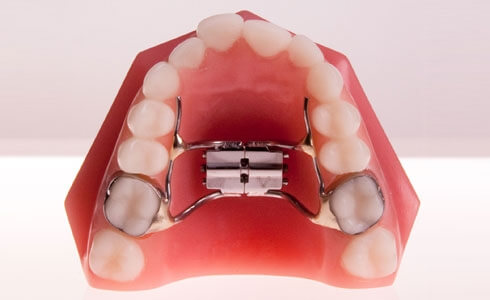
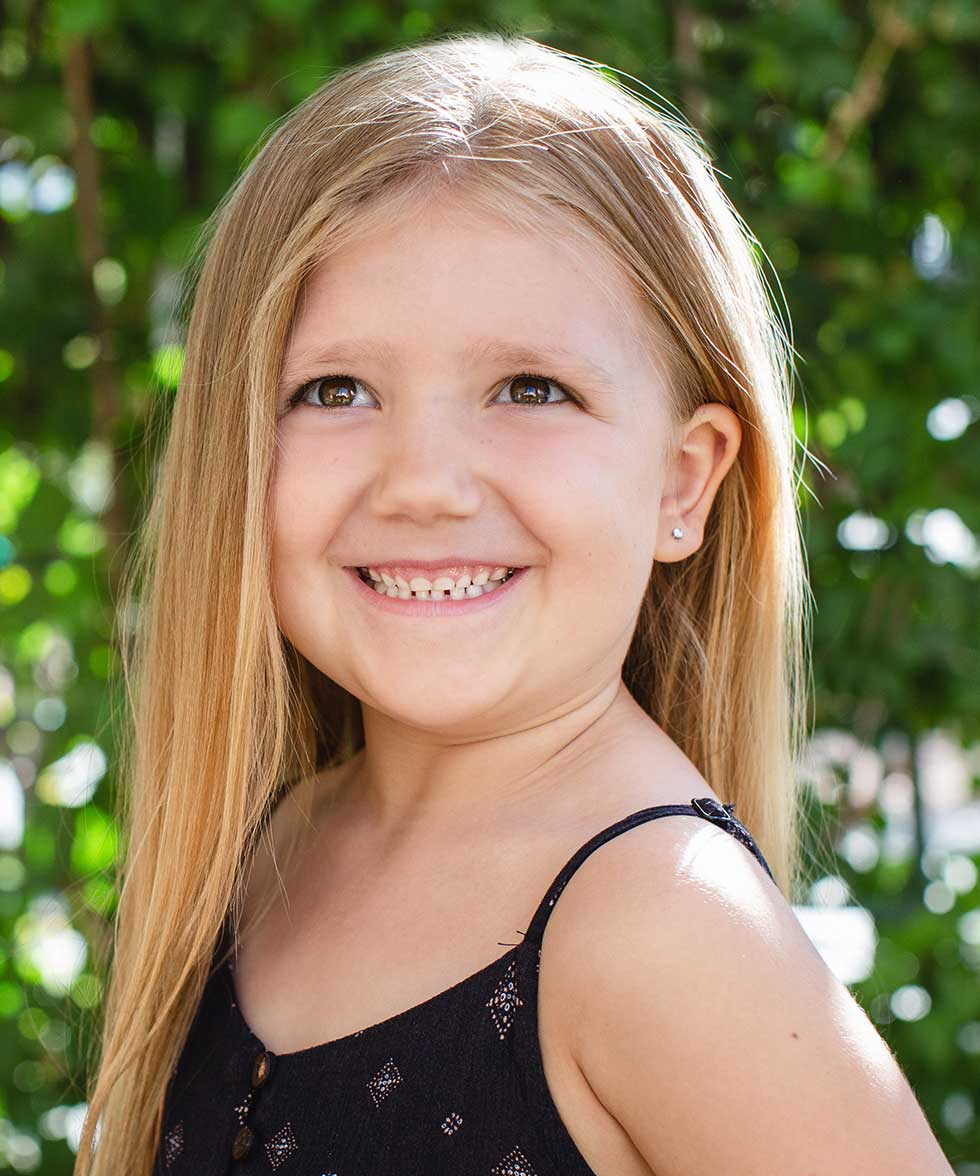
Herbst Appliance
It’s quite possible you have heard or saw an orthodontic appliance call a headgear (especially if you watched “Finding Nemo”). If your child walked into an orthodontics office 15 years ago with protrusive front teeth that rested on the lower lip, chances are they would be treated with a headgear appliance to pull those front teeth back. But if you actually looked at the child’s profile, you would note that it was the lower jaw that was recessive that cause the front teeth to appear so far forward. Therefore, the headgear did not approach the problem at hand; we just masked it by bringing the upper teeth back. In order to help the lower jaw grow forward, we use a device called the Herbst appliance. It is cemented in place and actively positions the lower jaw forward, immediately reducing the distance between the upper and lower front teeth. We love it because our patients do not need to remember to put it on or wear any rubber bands, it’s always active. Once the Herbst has been in place for 10-12 months, we remove it to place the braces, which stay on for another 12 months. Therefore, the Herbst appliance does two things: 1) helps a recessive lower jaw grow forward; 2) reduces the amount of time in full braces. It’s so much easier than strapping headgear on at night!
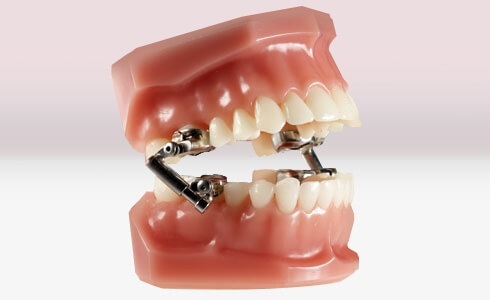
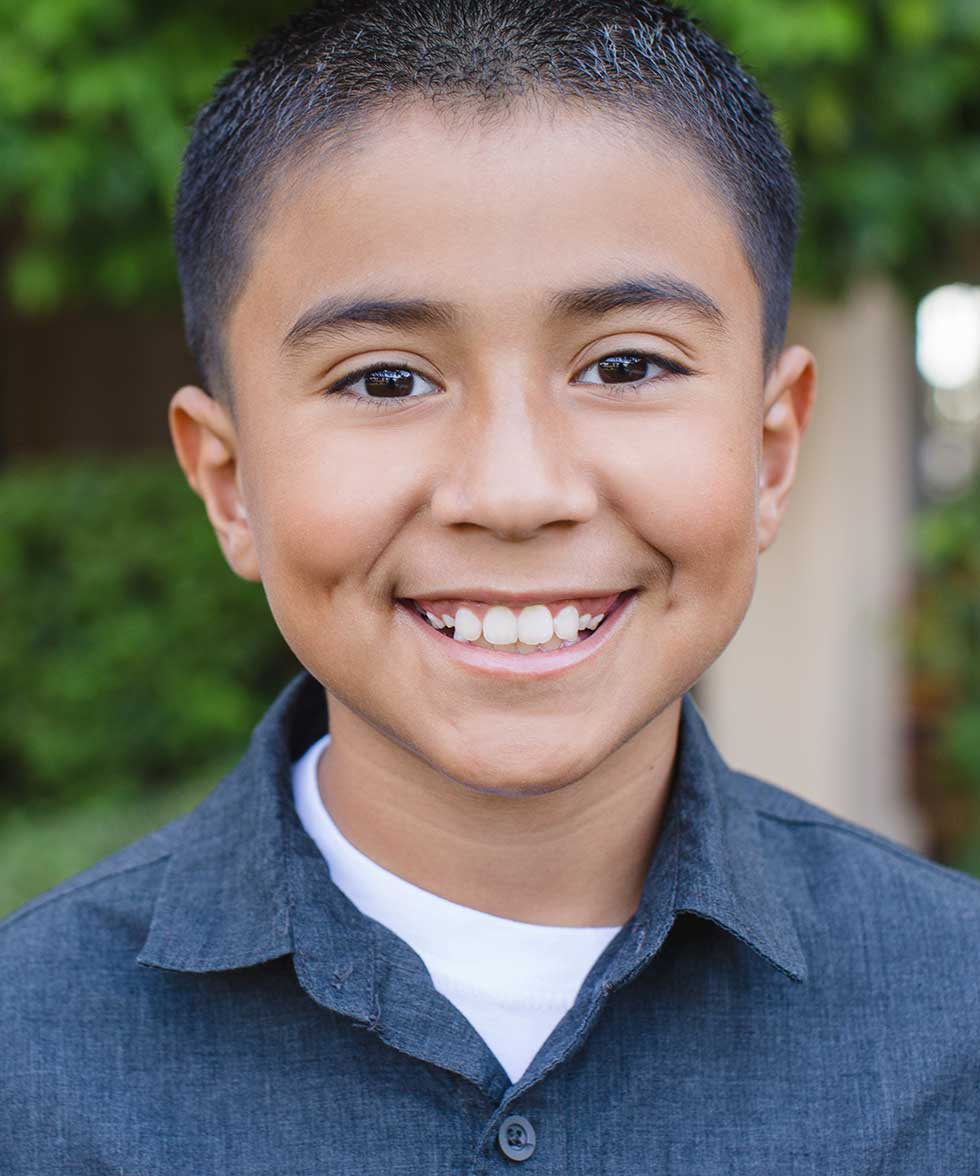
Bite Plate
The fixed bite plate is an appliance designed to correct patients who have a deep overbite by building up an acrylic ledge behind the upper incisors. This allows the lower incisors to contact the acrylic and in turn, opens the bite and allows for eruption of the posterior teeth.
